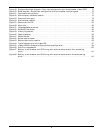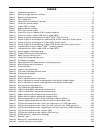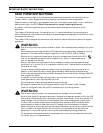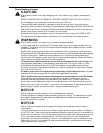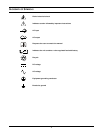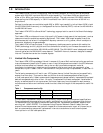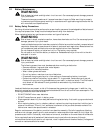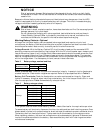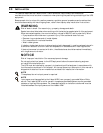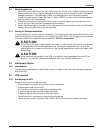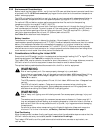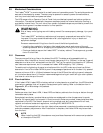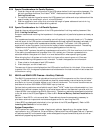
Introduction
6
1.2 Battery Maintenance
1.2.1 Battery Safety Precautions
Servicing of batteries should be performed or supervised by personnel knowledgeable of batteries and
the required precautions. Keep unauthorized personnel away from batteries.
When replacing batteries, use the same number and type of batteries.
Lead-acid batteries can present a risk of fire because they generate hydrogen gas. In addition, the
electrical connections must be protected against accidental short circuits which can cause sparks. The
following procedures should be followed:
• DO NOT SMOKE when near batteries.
• DO NOT cause flame or spark in battery area.
• Discharge static electricity from body before touching batteries by first touching a grounded metal
surface.
• After replacing battery jars in a battery cabinet, replace the retaining straps that hold the jars in
place on the shelves. This will limit accidental movement of the jars and connectors should the
cabinet ever need to be repositioned or relocated.
Regular maintenance of the battery module is an absolute necessity. Periodic inspections of battery
and terminal voltages, specific gravity and connection resistance should be made. Strictly follow the
procedures outlined in the battery manufacturer’s manual, available on the manufacturer’s Web site.
Valve-regulated lead-acid (sealed-cell) batteries do require periodic maintenance. Although
maintenance of electrolyte levels is not required, visual inspections and checks of battery voltage and
connection resistance should be made.
!
WARNING
Risk of electrical shock and high short circuit current. Can cause equipment damage, personal
injury and death.
These maintenance procedures will expose hazardous live parts. Refer servicing to properly
trained and qualified personnel working in accordance with applicable regulations as well as
with manufacturers’ specifications.
!
WARNING
Risk of electric shock, explosive reaction, hazardous chemicals and fire. Can cause equipment
damage, personal injury and death.
Lead-acid batteries contain hazardous materials. Batteries must be handled, transported and
recycled or discarded in accordance with federal, state and local regulations. Because lead is a
toxic substance, lead-acid batteries must be recycled rather than discarded.
Do not dispose of battery or batteries in a fire. The battery may explode.
Do not open or mutilate the battery or batteries. Released electrolyte is harmful to the skin
and eyes. It is toxic.
!
WARNING
Risk of electrical shock and high short circuit current. Can cause equipment damage, personal
injury and death.
The following precautions must be observed when working on batteries:
• Remove watches, rings and other metal objects.
• Use tools with insulated handles.
• Wear rubber gloves and boots.
• Do not lay tools or metal parts on top of batteries.
• Disconnect charging source prior to connecting or disconnecting battery terminals.
• Determine whether the battery is grounded. If it is grounded, remove source of ground.
Contact with any part of a grounded battery can result in electrical shock. The likelihood of
such shock will be reduced if such grounds are removed during installation and
maintenance.



